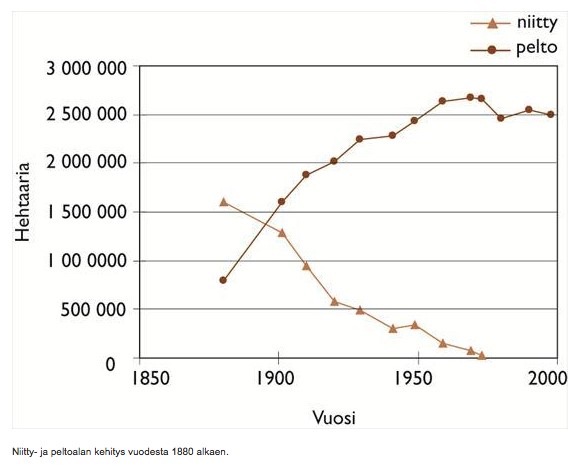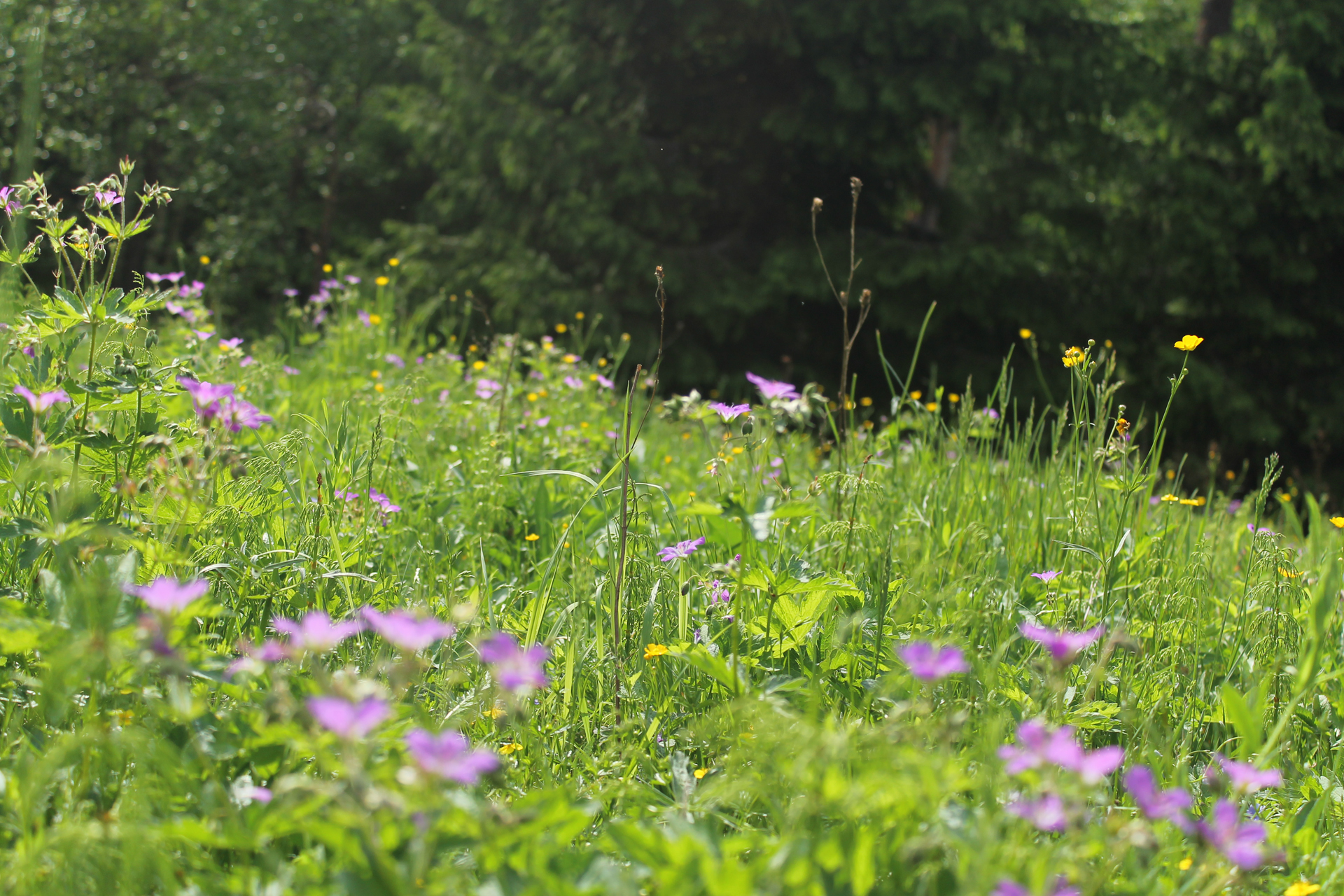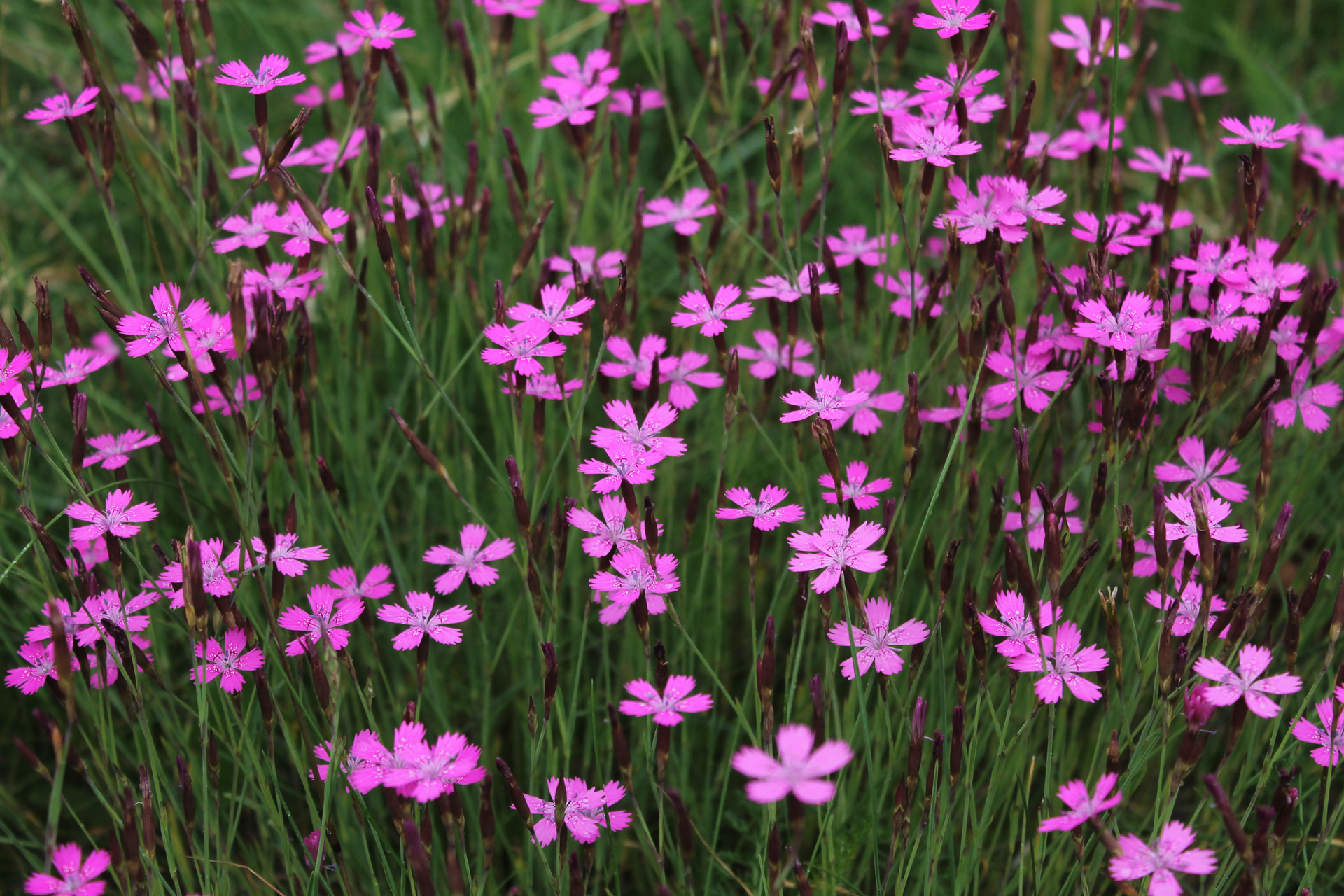Dry meadows need our help
The mesic and dry meadows created as a result of centuries of traditional pasturage and haymaking are currently disappearing. With pasturage in natural environments having decreased and fodder production having been moved to arable land, the formerly common meadows and woodland pastures have become rare.
Even the last of these open and nutrient-poor habitats are at risk of being claimed by bushes and trees and becoming overgrown due to eutrophic nitrogen deposition and lack of management. If this happens, the threatened species dependent on these habitats will also disappear.
Dry and mesic meadows are maintained by grazing, by removing shading trees and by mowing tall grasses. This keeps the habitat open and gradually decreases the nutrients in the soil. This in turn causes the meadow vegetation adapted to light, nutrient-poor conditions and occasional aridity to return, along with the other species that depend on the plants. Some dry meadow species have also found substitute habitats in roadsides, shore banks and power line clearings.


